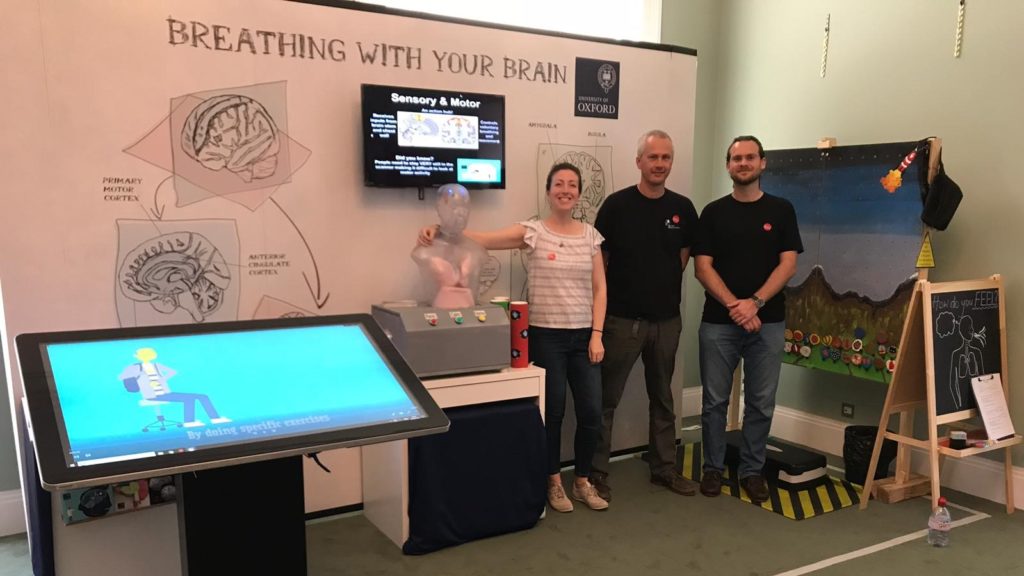In July 2019, the Breathe Oxford research group, supported by the BRC Cardiovascular theme, took their research to the prestigious Royal Society Summer Science Exhibition. Dr Sarah Finnegan, Postdoctoral Research Scientist at the Nuffield Department of Clinical Neurosciences, explains how the project came about and what the team learnt for future public engagement activities.

What is your research about?
Our research focuses on understanding how the brain influences feelings of breathlessness. This research will help people with asthma or chronic lung disease living with chronic breathlessness, either by developing better treatments or by making sure the right treatment reaches the right patient.
What was your project?
We wanted the general public to understand that the brain plays a key role in feelings of breathlessness. We entered a competition to showcase our research at the Royal Society Summer Science Exhibition for one week in London. We created four major activities each with a different breathing/neuroscience focus and method of communication so that we could appeal to a variety of audiences. These were a scale 3D-printed model of a human with brain-lung connections, an animation (see below), an exercise competition and some brain area-function matching games for children.
We raised £18,000 for the event and set up a committee to help steer the development of the activities with core members responsible for different aspects of the event. We had considerable support from the department communications team and recruited widely from across the department for volunteers to help run the stand across the week. The Royal Society included training days from professional science communicators, which helped make sure we were on track. We then passed this information onto our own volunteers in a special training day.
What was the result of your project?
The major result was a successful week at the Royal Society with more than 30 volunteers helping run the stand. More than 14,000 visitors attended the week and we were provided with stand specific feedback from the Royal Society itself. We carried out internal evaluation using visitor questionnaires, and although we did try to implement a token system of evaluation where visitors could vote for their favourite activity, that was not successfully implemented.
The event generated internal and external media coverage for the group and our research as we were interviewed by the BBC, photographed by The Telegraph and featured in a local newspaper. The legacy of this event has continued as we have recently been filmed for a television health science programme for BBC Persia and our resources have been used multiple times for subsequent public engagement events and talks.
What did you learn from the project?
Because this project was so big we invited the wider department to be a part of it, meaning we got to know lots of new people. We also received formal training from the Science Museum London via the Royal Society, which has enabled us to better formulate our public engagement activities for the future.
The evaluation was difficult because people did not necessarily take part in all activities, also the person designated to carry out the evaluation task would often get pulled into running various activities. I think a dedicated evaluation person, not wearing the same t-shirts as the other volunteers, would definitely be better.
Raising funds for the event was a significant challenge and so I would advise that anyone considering such a big event should already have a substantial investment before they begin. We probably tried to do too much in the space so I would reduce the number of activities happening and focus on getting them to a professional standard. All of the activities were well received at the event and we intend to continue to refine this library of activities for future events.